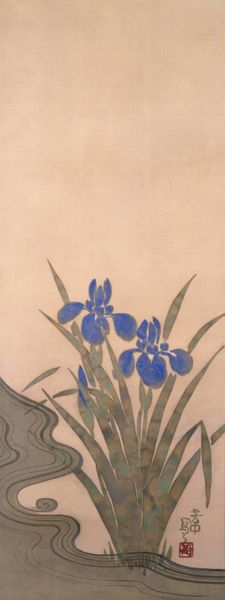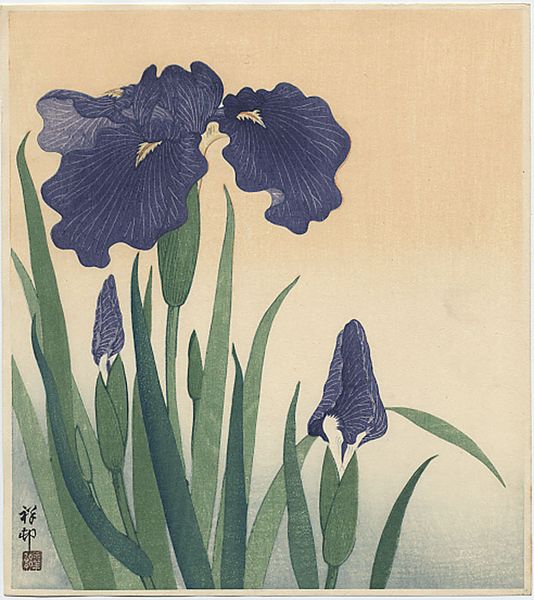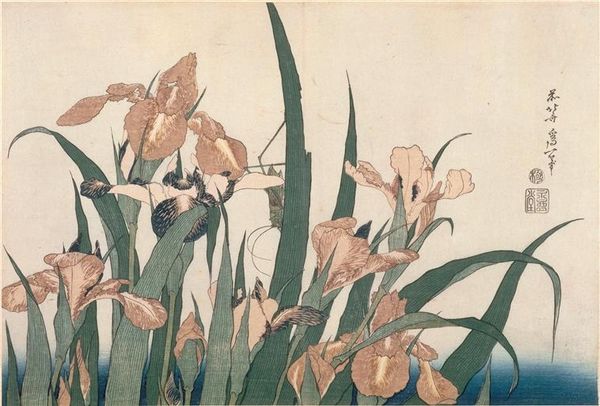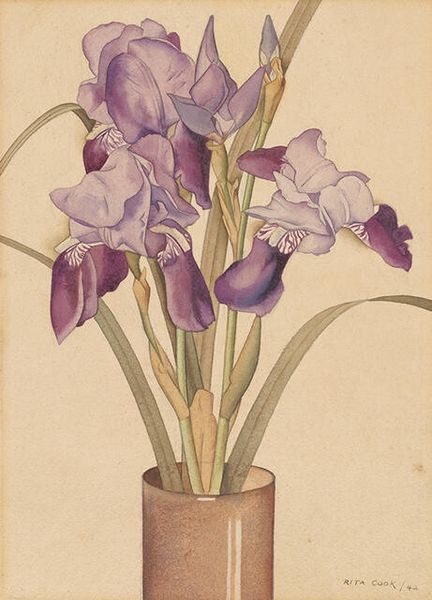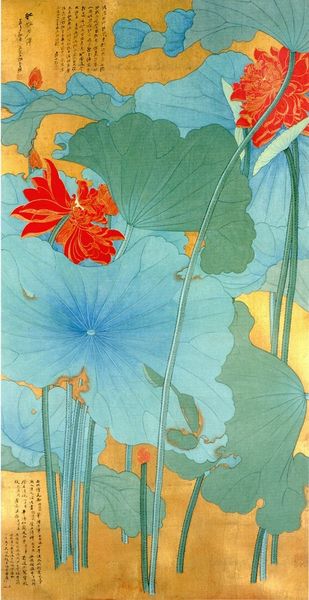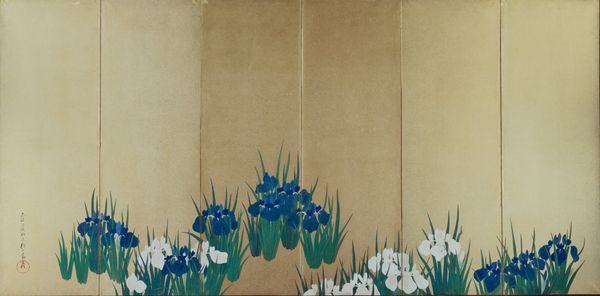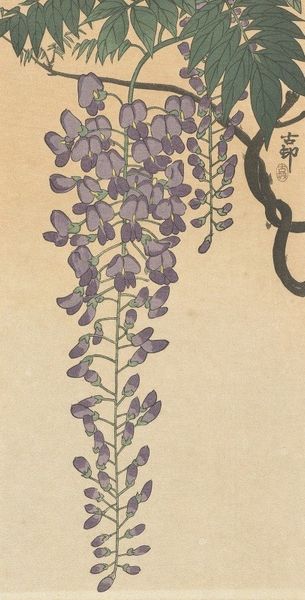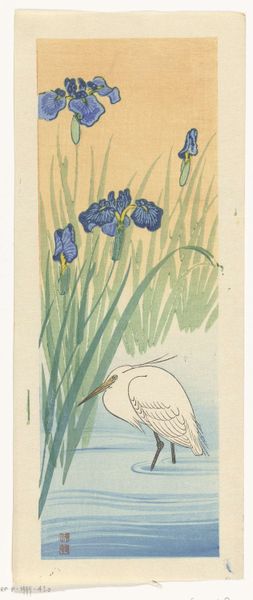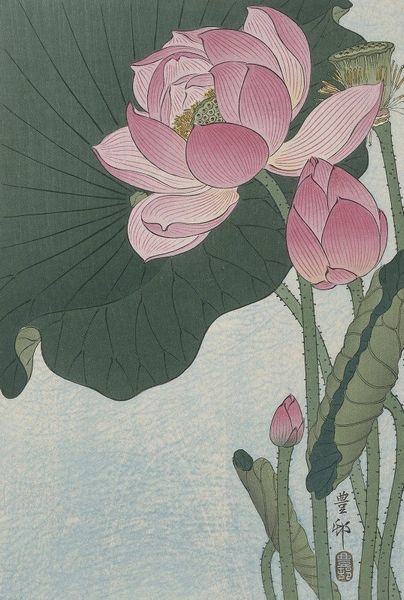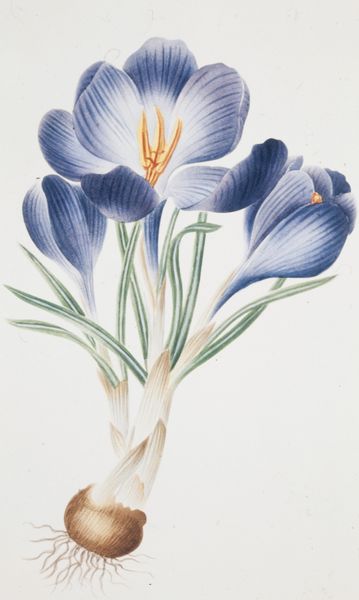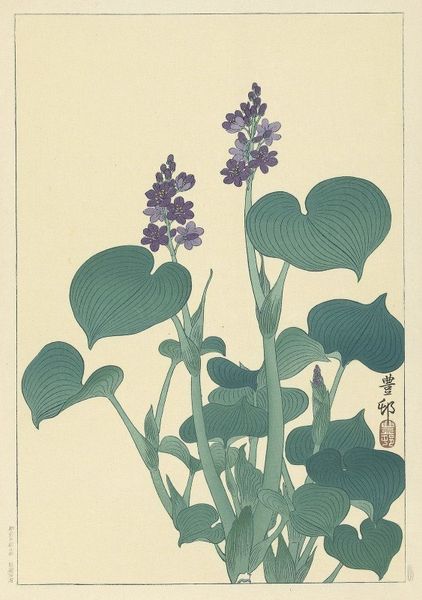
Copyright: Public Domain: Artvee
Curator: Looking at this print, "Blue Irises", made sometime between 1900 and 1930 by Ohara Koson, I’m struck by its apparent simplicity. But there’s a deeper narrative here, wouldn’t you say? Editor: Yes, my first thought is of stillness, almost quietness. The colour palette is very restrained. I find that so relaxing. Curator: Ukiyo-e, as this piece exemplifies, often reflected the shifting socio-political landscape of its time. Koson, positioned in that liminal space between tradition and modernity, offered, I believe, a commentary on Japan’s evolving identity through seemingly innocuous floral depictions. Editor: And those irises, such a striking purple. Irises, especially in Japan, carry powerful symbolism. Traditionally, they represent protection from evil, with their sword-like leaves thought to ward off bad luck. Curator: Precisely. And by focusing on natural themes like irises, Koson arguably navigated the restrictive artistic environment while subtly engaging with concepts of national identity and resilience, specifically masculinity through "shobu", the iris' other name, which means "military spirit". It becomes a visual metaphor, doesn’t it? Editor: Indeed, you are so right. The very upright form adds a structural integrity which speaks to fortitude and strength. Curator: What intrigues me is how these natural subjects transcend mere decorative status when examined in the light of the cultural moment. The “watercolor bleed”, as its been described, contributes a wistful, elegiac mood, almost imperceptible. Editor: It adds so much! Perhaps unintentionally, because this medium also has a link with expression, which seems very apt for a period of great cultural upheaval. Well, I see more in these simple flowers now! Curator: As do I! Bringing the art historical context together with contemporary understandings illuminates layers we may have otherwise overlooked, don’t you think?
Comments
No comments
Be the first to comment and join the conversation on the ultimate creative platform.
